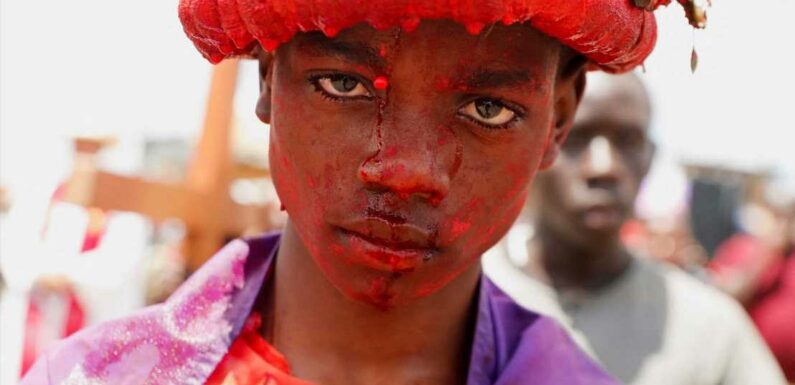
AS Easter approaches, Christians across the world are partaking in rituals to mark the holiday – and some are gory.
From Mexico to Italy, the Passion of the Christ has been depicted in bloody re-enactments and traditions.
Celebrations and painful re-enactments of the Passion of the Christ have been on full display in other countries and cities such as Australia, Brazil, Colombia, Ecuador, Germany, Haiti, The US, India, Kenya, Mumbai, Paraguay, Poland, Sudan and Venezuala.
In the small northern Italian town of Romagnano Sesia, performances of Jesus's last days have been held each day.
The dramatic four day re-enactments began in 1729, and has continued every two years in the small town.
The actor portraying Christ wore a real crown of thorns as he carried a large wooden cross through the streets of the village.
READ MORE IN WORLD NEWS
Molly-Mae Hague shares new pic of Bambi as she celebrates newborn’s first Easter
Mary Berry’s cake makes the perfect Easter showstopper – here’s how to make it
Three crosses were erected on top of a hill in the town, with re-enactment actors dressed in full Roman soldiers clothing.
Across the globe in Atlixco, Mexico, more than 100 men participate in the Procession of the Chained.
The Good Friday tradition has been a staple of the majority Catholic state for more than 100 years.
Rumour has it, the strange and gory tradition emerged when a man in the village used witchcraft to win over a lover.
Most read in The Sun
Netflix cancels hit show after two series
S Club 7 'concerned' before Paul Cattermole's death as he 'was very quiet'
Paul Cattermole's ex Hannah Spearritt broke down after hearing of his death
Paul revealed hopes for 'new beginnings' in tragic final interview
After realising his sin, he decided to march about the town each Good Friday to repent.
Men who participate in the brutal march are stuck with cacti all over their body, hooded and wear 70 pound chains and around their necks.
Onlookers throw cacti at them and offer the men squeezed juice from limes, which is the only thing they're allowed to drink during the procession.
But for many, they see it as a small act to repent for their sins.
Martin Cazares told The Mail: "It's an act of gratitude for all that God has given me, and a way to ask for forgiveness for all the bad I've done to be a better person. It helps me reflect.
"The spines are very painful, and it's exhausting.
"The heat suffocates you, and the exhaustion with the sun, the sun burning your feet, it's too much."
The Christian celebration is named after the Germanic goddess of springtime, Ostara – commonly referred to as Eostre or Eastre.
The goddess lent her name to the month of Easter almost two thousand years ago.
Read More on The Sun
Amy Childs gives birth to twins after ‘long and exhausting’ labour
People are only just realising why postal workers write ‘P’ on letters
And even though Christians had begun affirming the Christian meaning of the celebration, they continued to use the name of the goddess to designate the season.
But Eastre's symbol was the bunny or hare, which later became the symbol of the Christian Easter.
Source: Read Full Article





















